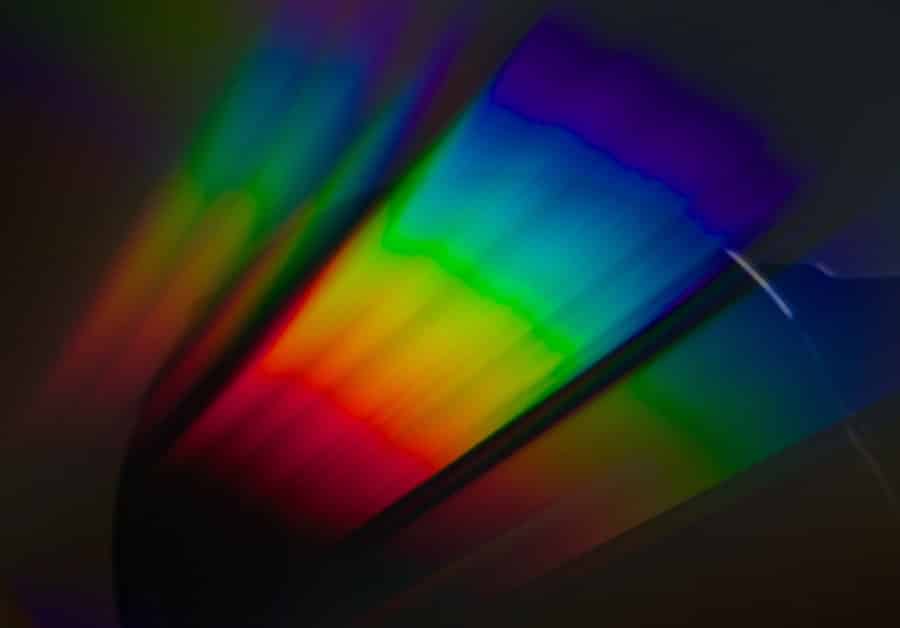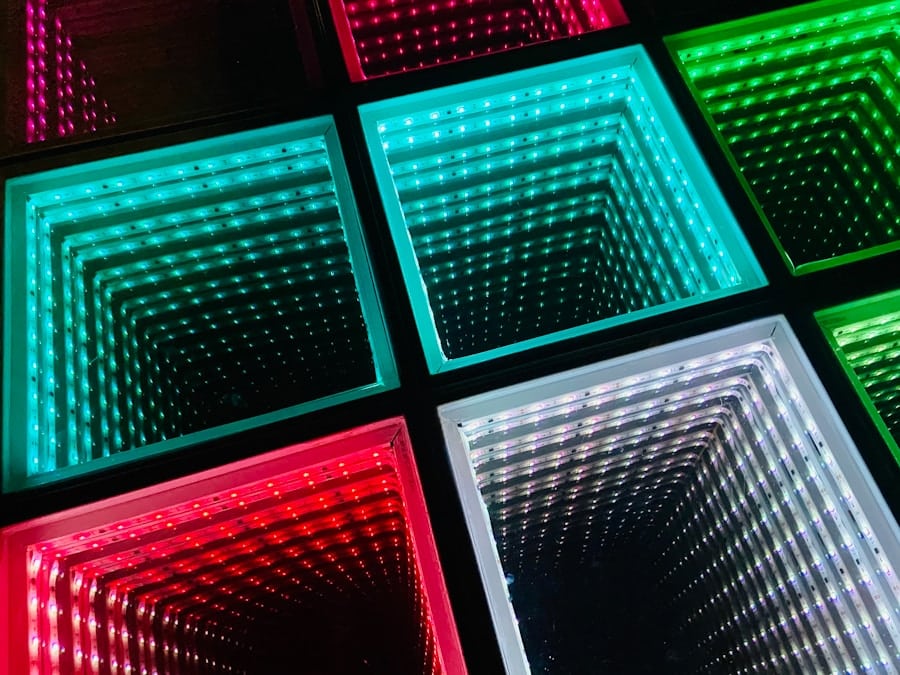Quantum dots (QDs) are nanoscale semiconductor particles that exhibit unique optical and electronic properties due to their size and quantum mechanical effects. Typically ranging from 2 to 10 nanometers in diameter, these tiny structures can emit light of specific wavelengths when excited, making them invaluable in various applications, particularly in display technologies. The phenomenon of quantum confinement allows these particles to have tunable band gaps, which means that by altering their size, one can control the color of light they emit.
This property is a direct result of the quantum mechanical behavior of electrons within the dots, leading to a range of applications that extend beyond displays, including solar cells, biological imaging, and quantum computing. The development of quantum dots has been a significant advancement in nanotechnology, with their potential first recognized in the early 1980s. Since then, research has accelerated, leading to the synthesis of various types of quantum dots, including cadmium selenide (CdSe), indium phosphide (InP), and lead sulfide (PbS).
Each type has its own set of properties and applications, but they all share the fundamental characteristic of size-tunable photoluminescence. As the demand for high-quality displays continues to grow, the integration of quantum dots into display technologies has emerged as a promising solution to enhance color accuracy, brightness, and energy efficiency.
Key Takeaways
- Quantum dots are nanoscale semiconductor particles that exhibit unique optical and electronic properties due to quantum mechanics.
- Quantum dots are used in LED displays to improve color accuracy, brightness, and energy efficiency compared to traditional LED technology.
- In LCD displays, quantum dots are used as a color conversion layer to enhance color reproduction and improve overall picture quality.
- QLED displays utilize quantum dots to achieve a wider color gamut, higher peak brightness, and better contrast compared to traditional LCD and OLED displays.
- The advantages of quantum dots in display technologies include improved color accuracy, energy efficiency, and overall picture quality, making them a promising option for next-generation displays.
Quantum Dots in LED Displays
In the realm of LED displays, quantum dots have revolutionized the way colors are produced and perceived.
However, this method often falls short in terms of color accuracy and vibrancy.
By incorporating quantum dots into LED technology, manufacturers can achieve a broader color gamut and improved color reproduction. When blue LEDs are used as a backlight source, quantum dots can be employed to convert some of that blue light into red and green light, resulting in a more vivid and lifelike image. One notable example of quantum dot application in LED displays is seen in the production of QD-LEDs (quantum dot light-emitting diodes).
These devices utilize quantum dots as the emissive layer, allowing for direct emission of light in specific colors without the need for color filters. This not only enhances the efficiency of the display but also reduces energy consumption. Companies like Samsung have pioneered this technology, leading to the development of displays that offer superior brightness and contrast ratios compared to traditional LED displays.
The ability to produce pure colors with minimal energy loss positions quantum dot-enhanced LED displays as a leading choice for both consumer electronics and professional applications.
Quantum Dots in LCD Displays

Quantum dots have also made significant strides in enhancing liquid crystal display (LCD) technology. In traditional LCDs, color filters are used to produce the desired colors from a white backlight. This process can lead to inefficiencies and limitations in color accuracy.
By integrating quantum dots into LCDs, manufacturers can create what are known as QD-LCDs or quantum dot-enhanced LCDs. In these displays, a blue LED backlight is used in conjunction with a layer of quantum dots that convert some of the blue light into red and green wavelengths. This results in a more vibrant color palette and improved overall image quality.
The impact of quantum dots on LCD technology is particularly evident in high-end televisions and monitors. For instance, brands like Sony and LG have adopted quantum dot technology to enhance their premium LCD offerings. The result is a display that not only achieves higher brightness levels but also covers a wider color gamut, often exceeding 90% of the DCI-P3 color space—a standard used in digital cinema.
This advancement allows viewers to experience more accurate and immersive visuals, making it particularly appealing for movie enthusiasts and gamers who demand high fidelity in their displays.
Quantum Dots in QLED Displays
Quantum Dot Light Emitting Diode (QLED) technology represents a significant evolution in display technology that leverages the unique properties of quantum dots. Unlike traditional LCDs that rely on backlighting, QLED displays utilize quantum dots as the primary light-emitting source. In this configuration, when an electric current is applied, the quantum dots emit light directly, producing vibrant colors with exceptional brightness and contrast.
This direct emission capability allows QLED displays to achieve deeper blacks and more vivid colors compared to conventional LCDs.
One key feature of QLED displays is their ability to produce high dynamic range (HDR) content with remarkable precision.
The enhanced brightness levels achieved through quantum dot technology enable QLED displays to render HDR images with stunning detail and clarity. Furthermore, QLEDs are less susceptible to burn-in issues compared to OLED displays, making them an attractive option for consumers who use their screens for extended periods or display static images frequently.
Advantages of Quantum Dots in Display Technologies
The integration of quantum dots into display technologies offers numerous advantages that enhance both performance and user experience. One of the most significant benefits is the expanded color gamut that quantum dots provide. Traditional displays often struggle to reproduce certain colors accurately due to limitations in their color filters and backlighting systems.
Quantum dots, however, can be engineered to emit specific wavelengths of light with high precision, resulting in displays that can reproduce colors more faithfully and vibrantly. Another advantage is energy efficiency. Quantum dot-enhanced displays require less power to achieve higher brightness levels compared to their traditional counterparts.
This is particularly important as consumers increasingly seek energy-efficient solutions for their electronic devices. The ability to produce bright images without excessive power consumption not only benefits users but also contributes to environmental sustainability by reducing overall energy usage. Additionally, quantum dots exhibit excellent thermal stability and durability, which enhances the longevity of display devices.
Unlike organic materials used in OLED technology that can degrade over time, quantum dots maintain their performance over extended periods. This stability ensures that consumers enjoy consistent image quality throughout the lifespan of their devices.
Challenges and Limitations of Quantum Dots in Display Technologies

Despite their numerous advantages, the use of quantum dots in display technologies is not without challenges and limitations. One significant concern is related to the materials used in the synthesis of certain types of quantum dots. For instance, cadmium-based quantum dots have raised environmental and health concerns due to the toxicity of cadmium.
As a result, there has been a push towards developing alternative materials such as indium phosphide or perovskite-based quantum dots that are less harmful but still offer comparable performance. Another challenge lies in the manufacturing process itself. Producing high-quality quantum dots with uniform size and shape is crucial for achieving consistent optical properties across a display panel.
Variations in size can lead to discrepancies in color output, which can compromise image quality. The scalability of production methods also poses challenges; while small-scale synthesis may yield excellent results, scaling up for mass production while maintaining quality remains a complex task. Moreover, while quantum dot technology has made significant strides in enhancing display performance, it still faces competition from other emerging technologies such as microLEDs and OLEDs.
These alternatives offer their own set of advantages and may appeal to different segments of consumers based on preferences for color accuracy, contrast ratios, or energy efficiency.
Future Applications of Quantum Dots in Display Technologies
Looking ahead, the potential applications of quantum dots in display technologies are vast and varied. One promising area is the development of flexible displays that incorporate quantum dot technology. As consumer demand for portable devices continues to rise, flexible screens could revolutionize how we interact with technology by allowing for curved or foldable devices without sacrificing image quality.
Additionally, advancements in quantum dot materials may lead to even more efficient displays with improved performance characteristics. Research into new compositions could yield quantum dots that emit light more effectively or operate at lower energy levels while maintaining high brightness and color accuracy. This could pave the way for next-generation displays that are not only visually stunning but also environmentally friendly.
Furthermore, as augmented reality (AR) and virtual reality (VR) technologies gain traction, quantum dots could play a crucial role in enhancing visual experiences within these immersive environments. The ability to produce highly accurate colors with minimal latency would be essential for creating realistic simulations that engage users fully.
Conclusion and Outlook for Quantum Dots in Next-Gen Display Technologies
The future outlook for quantum dots in next-generation display technologies appears promising as ongoing research continues to unlock new possibilities for this innovative material. With their unique properties enabling enhanced color reproduction, energy efficiency, and durability, quantum dots are poised to play a pivotal role in shaping the future landscape of visual technology. As manufacturers strive for higher performance standards and consumers demand more immersive experiences from their devices, the integration of quantum dots will likely become increasingly prevalent across various display formats—from televisions and monitors to mobile devices and beyond.
The ongoing exploration into alternative materials and manufacturing techniques will further bolster the viability of quantum dot technology while addressing existing challenges. In summary, as we move forward into an era defined by rapid technological advancements and evolving consumer preferences, quantum dots stand out as a transformative force within display technologies—one that promises not only enhanced visual experiences but also greater sustainability in our electronic devices.
A related article to “The Role of Quantum Dots in Next-Gen Display Technologies” is “How Smartwatches Are Revolutionizing the Workplace.” This article discusses the impact of smartwatches on productivity and efficiency in the workplace. To learn more about this topic, you can read the full article here.
FAQs
What are quantum dots?
Quantum dots are semiconductor nanocrystals that are typically between 2 to 10 nanometers in size. They exhibit unique optical and electronic properties due to their size and composition.
How are quantum dots used in display technologies?
Quantum dots are used in display technologies to enhance color reproduction and efficiency. They can be used in LED-backlit LCD displays to improve color accuracy and brightness.
What are the advantages of using quantum dots in display technologies?
The use of quantum dots in display technologies can result in a wider color gamut, improved energy efficiency, and better overall picture quality compared to traditional display technologies.
Are there any drawbacks to using quantum dots in display technologies?
One potential drawback of using quantum dots in display technologies is the potential for environmental impact due to the use of heavy metals in their composition. However, efforts are being made to address this issue through recycling and alternative materials.
What are some examples of display technologies that use quantum dots?
Some examples of display technologies that use quantum dots include QLED (Quantum Dot LED) TVs, monitors, and mobile device screens. These technologies leverage the unique optical properties of quantum dots to deliver vibrant and accurate colors.

